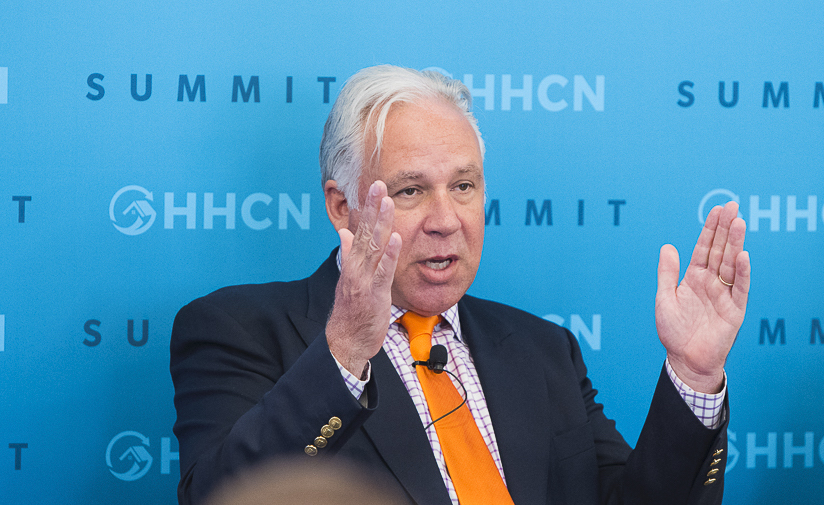For Amedisys Inc., (NASDAQ: AMED) CEO Paul Kusserow, risk is an opportunity, particularly when it comes to palliative care.
The growing prominence of palliative care — and the accompanying investments — may seem counterintuitive at first blush given the reimbursement environment. But with the advent of risk-based payment, the relatively young medical specialty is gradually chipping away at its shell and taking its first steps toward financial viability.
A key component of the business case is the promise of cost savings for payers in the form of reduced hospitalizations and emergency department visits, according to Kusserow. As Medicare Advantage and Accountable Care Organizations (ACOs) continue to gain ground, Amedisys is positioning itself to deliver palliative care at a larger scale.
The company is soon expected to announce a major payer contract for the service.
“It’s important that as we do emerge as a major palliative player and stake that ground out. I think there’s a coordinated effort between home health, palliative and hospice where I have to think there’s an important emphasis on building out our palliative programs so that we get people into hospice at the right time,” Kusserow told Hospice News. “We found a way to afford and to drive good palliative care so that we can have that coordinated effort.”
Expanding its palliative care business was part of the impetus for Amediys’ acquisition of Contessa in 2021 for $250 million, Kusserow said. Though Contessa’s bread and butter has been high-acuity care in the home, the subsidiary is emerging as the spearhead of its parent company’s palliative care business.
In this endeavor, joint ventures are a pillar of the strategy. During the past two years, Contessa has teamed up with several health systems in JVs that offer palliative care, among other services. Among them are Baylor Scott & White Health, Memorial Hermann Health System and Henry Ford Health System, to name a few.
A partnership with Mount Sinai Health System, which predates Amedisys’ purchase of Contessa, also recently expanded. Amedisys executives have indicated that the company has an extensive pipeline of these partnerships in the works.
Now, risk-based contracts with MA plans are building on that foundation.
Reimbursement for palliative care in fee-for-service Medicare currently only covers physician or nurse practitioner services. The U.S. Centers for Medicare & Medicaid Services (CMS) allows Medicare Advantage plans to cover home-based palliative care as a supplemental benefit. CMS also included palliative care elements in the hospice component of the four-year value-based insurance design demonstration (VBID).
“The key with palliative care is the managed care plans. Medicare Advantage plans recognize the value of palliative care, of paying for palliative care, and [they] understand that it leads to hospice, which leads to a better experience,” Kusserow said. “It also allows them to offload what’s an extraordinarily expensive time from their cost perspective. But ultimately, the satisfaction from their members and their members’ families is much higher than if their members went without hospice.”
This echoes the approach that many other providers have taken, leveraging early patient engagement through palliative care to help smooth transitions of care and move hospice-eligible patients into the benefit sooner in their disease process. Palliative care is often a loss leader for these organizations, ostensibly offset by earlier hospice referrals.
Many providers, particularly nonprofits, also rely on philanthropic funding to keep their palliative care services going.
A range of stakeholders in the space — and some lawmakers — have called on CMS to establish a dedicated community-based palliative care benefit within Medicare. While CMMI is reportedly working on models that incorporate palliative care, the agency has not as of yet announced any demonstrations specific to that service.
Kusserow stopped short of endorsing any particular model, but indicated that he is “all for anybody that believes that we can do affordable palliative care.”
“The one thing if we don’t have it, the one place the one thing people ask for is palliative, on both sides on home health and on hospice,” he told Hospice News. “When I go to hospitals, they want palliative care. It’s astonishing to me that it’s a benefit that people lose their shirts on. The necessity of this benefit is so strong, but there’s been a real reluctance to fund it appropriately.”



